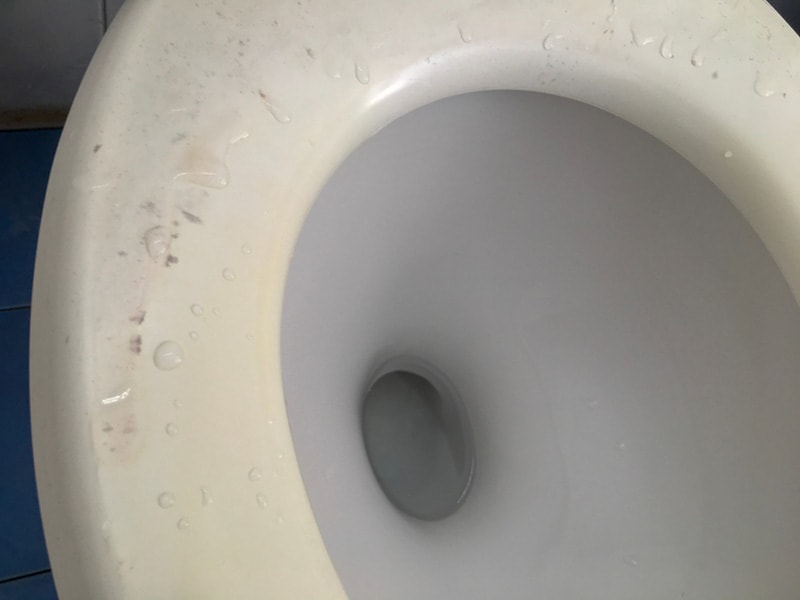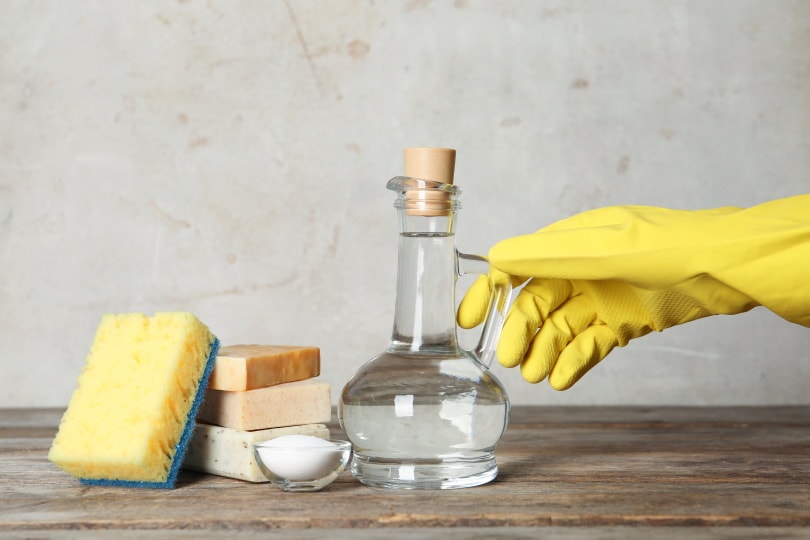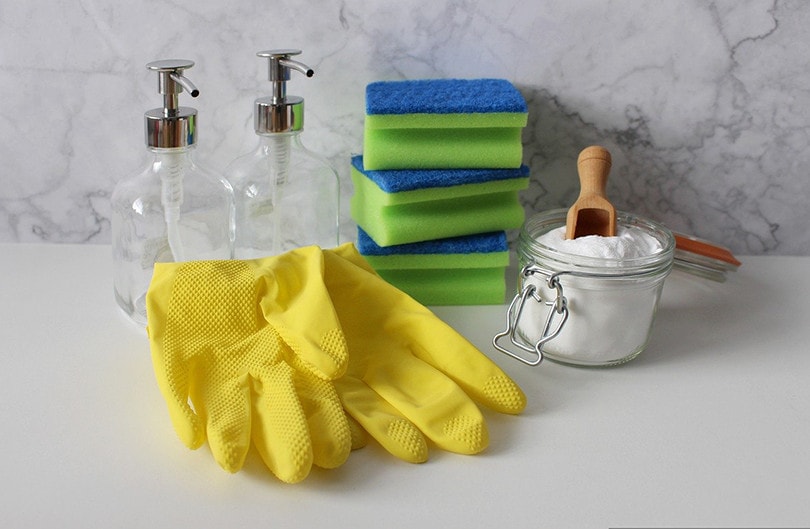How to Remove Rust Stains in a Toilet: 5 Expert Tips
-
Pete Ortiz
- Last updated:

Do you have a rusty toilet in your home? Rust looks a lot like dirt since it’s often brown or burnt orange, and your toilet is the last place you want it. This leaves many homeowners wondering what causes rust in their toilets and how they can get rid of it.
Luckily, there are several ways to remove the rust and prevent it from occurring again. Read on to learn about the expert tips you can use to remove rust stains in your toilet.
Causes of Rust in the Toilet
Rust occurs when iron, tin, and nickel come into contact with water. High iron level in the water is the leading cause of rust in the toilet bowl. It develops when the iron becomes exposed to oxygen and oxidizes, turning the color of the bowl to a brownish or red-orange hue.
High iron levels in water are typically found in older homes with aging pipes. It can also happen if the water used to flush the toilet is hard water. Therefore, even if you religiously clean your toilet every week, rust can still appear.
1. Old Pipes
If you notice rust developing in your toilet, the first thing you need to investigate is the condition of the pipes. How old are they? Are they leaking? Ask yourself these questions or get a plumber to investigate it. If there is damage in your pipes, it creates the perfect environment for rust to develop by allowing the water and oxygen to meet. Once the rust gets in your pipes, it can travel to the toilet when you flush.

2. Hard Water
If you are living in an area with hard water, there is a high chance that you will notice rust in your toilet or bathroom every once in a while. Hard water contains a high amount of iron that creates a brownish color in your water after combining it with oxygen molecules.
3. Old Toilet
How old is your toilet? Most old toilets are outdated because they are not made to be rust-resistant. Most homeowners with outdated toilets also need to clean them more often than modern toilets. If you notice a brown ring in your toilet despite cleaning it often, it is most likely outdated and should be replaced.

How to Remove Rust Stains From Your Toilet
During your regular toilet cleaning, ensure you concentrate on the areas with rust stains and those prone to rusting. It’s also crucial to clean the outside of your toilet bowl just as thoroughly. Take time to establish how deep and stubborn the stain is before dealing with it. This will guide you on the best method to use to get rid of it.
You can use several pieces of equipment and detergents, including homemade solutions. They include the following:
1. Commercial Rust Removers
There are several rust removers in the market that you can purchase to remove the rust in your toilet, especially if the rust stains are stubborn. Some are harsher than others and should not be handled with bare hands. Read the instructions carefully and follow the directions on the label.
Some commercial rust removers must be diluted before they can be used, while others can be used directly. Spray or dab a small amount of the rust remover on the rusty area, let it sit for 5–10 minutes, and use a scouring pad to wash off the rust. You can repeat this as often as possible until the rust washes off.

2. Cream of Tartar
If you are a baker, you probably have the cream of tartar stashed somewhere in your pantry. It’s made of potassium bitartrate, which is an excellent rust remover. Sprinkle a small amount on the rust-stained toilet area and scrub it off with a damp nylon-bristled brush. You can also make a paste with a few drops of water and apply it to rust stains inside the toilet bowl.
Let it sit for a few minutes. You can keep the paste from drying by covering it with plastic wrap. This gives the acid more time to work effectively. After removing the wrap, you can use your old toothbrush to scrub any tight areas in the toilet bowl.
3. Distilled White Vinegar
White vinegar is a must-have in your household because it comes in handy in almost all cleaning situations. It contains acetic acid that is effective in removing tough rust stains. You can use it to wash your toilet weekly to prevent rust stains from becoming permanent. Although you can still use regular food-grade distilled vinegar, cleaning vinegar has a higher acidity and is better for this situation.
Put the distilled white vinegar in a spray bottle and spray it on the rust stains. Use a brush to scrub the area, rinse well with clean water and then wipe it dry. You can also add one or two cups of distilled vinegar to the toilet bowl and scrub it with the toilet brush to get rid of the brown ring at the bottom. If the stain is tough, let the vinegar sit overnight or for a few hours before scrubbing.

4. Citric Acid
You can use store-bought citric acid powder or juice from fresh lemons and limes. When using fresh lemon or lime, cut it in half, dip the cut edge in salt or baking powder to make it more abrasive, and scrub the rusty area.
For tougher rust stains, mix freshly squeezed lemon juice with baking powder to form a paste and apply it to the rust-stained area. Cover it with cling film to ensure it stays moist to enable it to break down the rust particles efficiently. When using citric powder, make a paste with some water and baking soda, apply it on the stained area, and let it sit for a few minutes before using a brush to scrub away the stain.
5. Use Gentle Abrasives
Gentle abrasives like baking soda, salt, and pumice powder can help rid rust stains. They don’t cause a lot of damage to the porcelain or fiberglass bowl and can be rinsed off easily. Wet the rust-stained surface with water, sprinkle some abrasive on the surface, and use a cloth to scrub the area. Rinse it off and pat it dry with a clean rag.

Preventing Rust Stains on Toilets
Now that you’ve removed rust stains from your toilet, it’s time to ensure you keep them away for good. Some of the tips you can employ to do this include:
- Cleaning your bathroom regularly with detergents to prevent iron particles from building up.
- Keeping the external surfaces as dry as possible.
- Adding a water softener or water filter to eliminate the problem is the leading cause of the rust stains is hard water.
- Replacing your older and damaged pipes with new PVC ones.
- Inspect the interior of the toilet tank; older toilets have some metal components inside the tank that can get corroded and rusty.
Final Thoughts
A rusty toilet can make your entire bathroom look dirtier or older than it actually is. If you can’t spot the leading cause of the rust, get a trusted plumber to look at the entire system and repair it. Hopefully, one of the solutions above should help you rid your toilet of rust stains.
Featured Image Credit: Sergio Photone, Shutterstock
Contents


